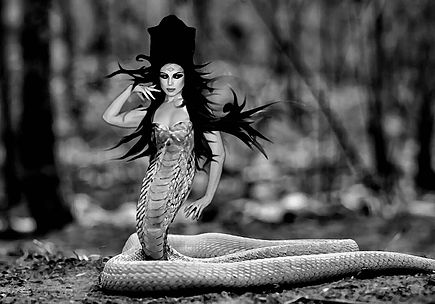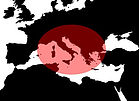Equidna
March 19, 2017

The Echidna was a monster with the upper body of a human woman but with the torso and legs of a serpent, who was the mate of the fearsome hundred-headed monster Typhon.
Her ancestry and origin have been a matter of debate for centuries. In older records, such as the Hesiod’s Theogony (a poem by Hesiod composed c. 700 BC), the sea deities Phorcys and Ceto are appointed as Echidna’s parents. However, in newer narratives, like the account of the mythographer Apollodorus (a compendium of Greek myths dated between 100-200 AD), it’s mentioned that Echidna was the progeny of Tartarus and Gaia. To make matters worst, in Hesiod poem, Tartarus and Gaia are referred as the parents of Typhon, Echidna’s husband.

Nonetheless, and despite her murky origin, Echidna is best known for being the mother of the most notorious monsters in Greek Mythology. Among Echidna and Typhon’s progeny were Ladon (the dragon who protected the Golden Apples of the Hesperides), the dragon who protected the Golden Fleece, the Hydra, the goat-like Chimera, and the infernal hounds Orthus and Cerberus. The Sphinx and the Nemean lion, both sired by Orthus in a very Greek myth display of incest, were also among her offspring.
When she and Typhon attacked the Olympians, Zeus defeated them and punished Typhon by sealing him under Mount Etna. However, Zeus allowed Echidna and her children to endure, provided she lived forever in a cave, and her children challenged the courage of the heroes to come. She was finally killed by Argus Panoptes, a hundred-eyed giant who served Hera. Argus killed Echidna by throwing spears into her when she fell asleep. So many were the spears, that it resembled the spines of a cactus.
References:
-Apollodorus, Apollodorus, The Library, with an English Translation by Sir James George Frazer, F.B.A., F.R.S. in 2 Volumes. Cambridge, MA, Harvard University Press; London, William Heinemann Ltd. 1921.
-Hošek, Radislav, Lexicon Iconographicum Mythologiae Classicae (LIMC) III.1. Artemis Verlag, Zürich and Munich, 1986.









